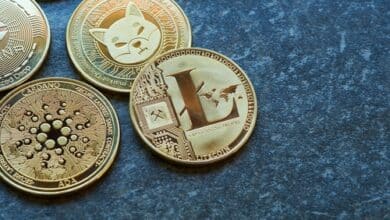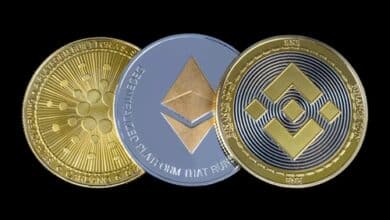Exploring Polygon, the Largest Known Layer-2 Network

Polygon MATIC is the preferred option for companies and industry leaders. Polygon has formed strategic alliances. However, what exactly is Polygon MATIC?
Polygon, formerly known as Matic Network, is a framework for creating linked blockchain networks. It aims to overcome Ethereum’s significant shortcomings by implementing a revolutionary sidechain solution.
Unlike its predecessor, Matic Network, Polygon was created with the goal of developing interoperable blockchains.
How to use the Polygon network?
With Polygon, almost anything that is possible on the Ethereum network is achievable for a rather modest cost.
To utilize the Polygon network, cryptocurrency must be stored in a compatible wallet. The subsequent stage is to connect a portion of the crypto to the Polygon network.
For transactions, MATIC bridges are also required. Because of its low costs and speedy transactions, the Polygon network is one of the finest ways to explore DeFi protocols in the real world.
Polygon’s Proof-of-Stake model
The PoS consensus method pays token holders for their commitment to network maintenance and transaction confirmation.
Just 1 MATIC is required for staking, and interest may be gained. The majority of individuals, however, entrust their staking to a validator as opposed to accumulating sufficient MATIC and managing the validator themselves.
Validators charge a portion of the staked prizes as their commission.
Proof-of-stake also carries an element of danger. It is possible for individuals to lose a portion or all of their investment.
How is Polygon Ethereum’s “Internet of Blockchains?”
The fundamental motivation for the development of Polygon was to encourage a future in which diverse blockchains operate as networks that blend into a vast, linked environment.
The long-term objective is to let consumers engage directly with decentralized products and services in a world without middlemen and borders.
To accomplish this objective, Polygon employs the following technologies:
POS Chain
The notable chain of Polygon is the MATIC POS Chain, an Ethereum sidechain that gives a PoS security layer to Polygon-based blockchains.
Plasma Chains
Plasma is a scaling mechanism that Polygon employs to transmit assets between the root and child chains using Plasma bridges.
Polygon SDK
Polygon SDK is an adaptable and extendable platform for developing ETH-compatible networks. Maintaining the optimal performance of the Polygon’s basic layers was the motivation for its creation.
ZK-rollups
It is a scalability method that combines several off-chain transactions into one on-chain transaction. ZK-rollups provide verification by zero-knowledge proof for every rollup.
Optimistic rollups
It is a technology that operates atop Ethereum to provide near-instantaneous transactions using fraud proofs.
Polygon Chains
Polygon MATIC supports two kinds of Ethereum-compatible distributed ledgers. They include:
Secured Chains
Secured Chains employs security as a service as opposed to maintaining its own validator pool. Yet, they lack adaptability and decentralization despite their greater security.
Stand-alone Chains
These chains are autonomous Ethereum-compatible networks that manage their own security, including validators.
What is MATIC?
It is Polygon’s native currency and an ERC-20 token. MATIC is used to run and protect the Polygon network, as well as pay the network’s transaction fees.
There will never be more than 10 billion coins in circulation, limiting MATIC’s supply.
How to purchase MATIC?
Polygon MATIC may be acquired on crypto exchanges such as Coinbase in the same manner as other cryptocurrencies.
A confirmed account is required to complete the transaction. When an account has been made, Polygon MATIC may be purchased through bank transfer, debit/credit card, wire transfer, or even fiat currency.
Some cryptocurrency exchanges also provide staking services, allowing users to earn interest on their Polygon MATIC tokens while they are stored on the exchange.
Apart from cryptocurrency exchanges, decentralized exchanges such as Uniswap allow the buying of MATIC.
In addition to the crypto wallet, a payment processor may be utilized for the direct purchase of MATIC. It may also be necessary to purchase another token and pay a price to exchange it for MATIC.
After attaching an approved wallet, the Polygon Bridge may be used to deposit and withdraw MATIC on the Polygon Mainnet.
What is a Polygon wallet?
The Polygon wallet allows users to transfer and receive crypto assets as well as stake MATIC on Polygon’s network and earn interest. It also provides access to the Polygon bridge, which allows deposits and withdrawals across different blockchains.
The Polygon project provides users with a non-custodial online wallet in order for them to manage their tokens on the Polygon network. Users have complete control over their private keys while using non-custodial wallets.
It is critical to understand that Polygon MATIC may be kept in any ERC-20-compliant wallet.
What makes Polygon special?
Polygon MATIC is, without a doubt, one of the most recent blockchain interoperability and scalability attempts. Moreover, it is compatible with the Ethereum Virtual Machine, making it ideal for individuals who design Ethereum applications and programs in Solidity.
Polygon’s shared security architecture is optional, so sovereignty systems do not have to sacrifice freedom or flexibility for more security if it is not necessary.
Last but not least, Polygon MATIC is very adaptable to any scaling solution.
The benefits and drawbacks of Polygon
While discussing Polygons and related topics, it is critical to understand their benefits and drawbacks. On that topic, let’s start with the positives.
- Over 65,000 transactions are managed by Polygon per second.
- Despite operating on Ethereum, Polygon’s transaction fee is low.
- Its validation system makes it more secure as compared to other networks.
- Polygon has a joint system that has the Heimdall architecture and PoS which enhances its scalability and power.
- Owing to Polygon’s customizable tech stack, users get experiences similar to the Ethereum blockchain.
- Renowned investors and industry leaders support Polygon. For instance, in 2021, Mark Cuban invested a huge amount in Polygon.
Let’s see the dark side now.
- Polygon depends on the Ethereum blockchain for transactions, which means the network will have consequences if Ethereum faces any disruption.
- MATIC, the Polygon token, is limited to being used only on the network and can’t be used for cryptocurrency-based transactions.
- Other blockchain technologies give serious competition to Polygon, which might harm its market potential.
- Development in Ethereum 2.0 could make Polygon useless.
Polygon in news
Polygon secured $450 million in funding from Republic Capital, SoftBank, Tiger, Sequoia Capital India, and Galaxy.
Polygon has approximately 7,000 decentralized applications on the network in January 2022.
Polygon’s zkEVM has handled over 22,000 transactions since its debut in October 2022.
Polygon’s daily transactions exceeded BNB’s daily transactions.
Conclusion
Polygon has the potential to do well since it has been effective in addressing the blockchain’s scalability issues. Moreover, thanks to Polygon’s tools and capabilities that enable developers to access customization choices, blockchain developers may establish their own decentralized networks.
In terms of investing, 2023 seems promising; yet, short-term traders may face difficulties. Polygon is attractive in terms of the potential to produce large gains for long-term traders.
Tokenhell produces content exposure for over 5,000 crypto companies and you can be one of them too! Contact at info@tokenhell.com if you have any questions. Cryptocurrencies are highly volatile, conduct your own research before making any investment decisions. Some of the posts on this website are guest posts or paid posts that are not written by Tokenhell authors (namely Crypto Cable , Sponsored Articles and Press Release content) and the views expressed in these types of posts do not reflect the views of this website. Tokenhell is not responsible for the content, accuracy, quality, advertising, products or any other content or banners (ad space) posted on the site. Read full terms and conditions / disclaimer.





